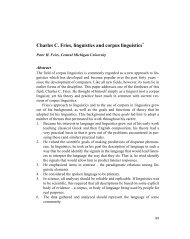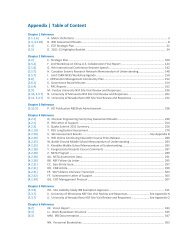Hubbard_Teacher_Guide_-_FINAL
Hubbard_Teacher_Guide_-_FINAL
Hubbard_Teacher_Guide_-_FINAL
Create successful ePaper yourself
Turn your PDF publications into a flip-book with our unique Google optimized e-Paper software.
POST-WWII DEVELOPMENTS The choreographers of the 1940’s and 1950’s respected the struggles faced by the founding generationof modern dance, but also wanted to branch out into their own creative paths. These dancers acknowledged the usefulnessof ballet and began to incorporate it back into their choreography. This meant that much of their dances were more lyrical than theprevious modern dances.NEW FREEDOM In the 1950’s and 1960’s choreographers began to rebel against the previous traditions of modern dance; a moreappropriate label for this work is contemporary dance. These dancers promoted the idea that any movement could be considereddance if used by a choreographer. Many did not use music, elaborate costumes, and makeup. They also sought out alternativeperformance venues outside of the traditional stage.Internet Resource The Guardian’s Step-By-Step <strong>Guide</strong>s to Dance: http.guardian.co.uk/stage/dance+series/stepbyspepguidetodanceThese guides break down the works of current choreographers in a humorous and accessible format. They cover biographies, elements of style, and quotes. Many wellknown choreographers are included, such as George Balanchine and Merce Cunningham.TED SHAWN(1891 – 1972)Although the modern dance movementwas initially female-dominated, theintroduction of Ted Shawn began to closethe gender divide. He was a husband anddance partner to Ruth St. Denis, anotherlargely influential contributor of the time.The two created the Denishawn Companyin Los Angeles, which trained many ofthe later generation of modern dancers.MARTHA GRAHAM(1894 – 1991)To this day, Martha Graham remains oneof the most well-known modern dancers.Her theory of dance technique wasthat all motion stemmed from the pelvis,an idea that has resulted in a system ofteaching that is still used today. Grahammostly choreographed dances with musicthat was specially commissioned.JOSÉ LIMÓN(1908 – 1972)An impressive dancer with an extensivelegacy, José Limón’s dance company wasthe first to successfully survive after itscreator’s death. His dance possessed aunique lyricism due to a technique offall and recovery, in which one gives into gravity and then rebounds off theground. This technique is often taughtas a counterbalance to Martha Graham’spelvis technique.UMS 09-1033








